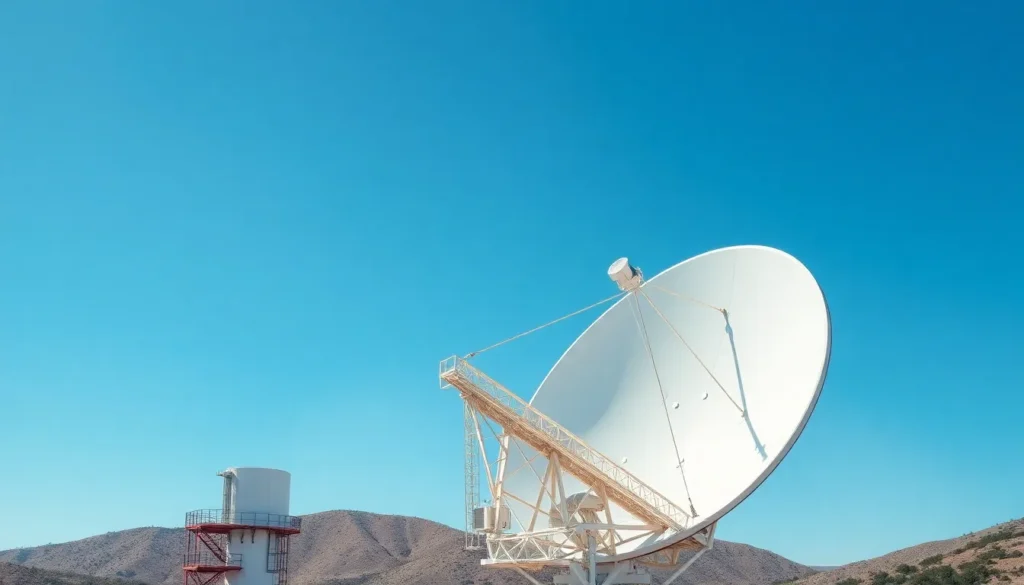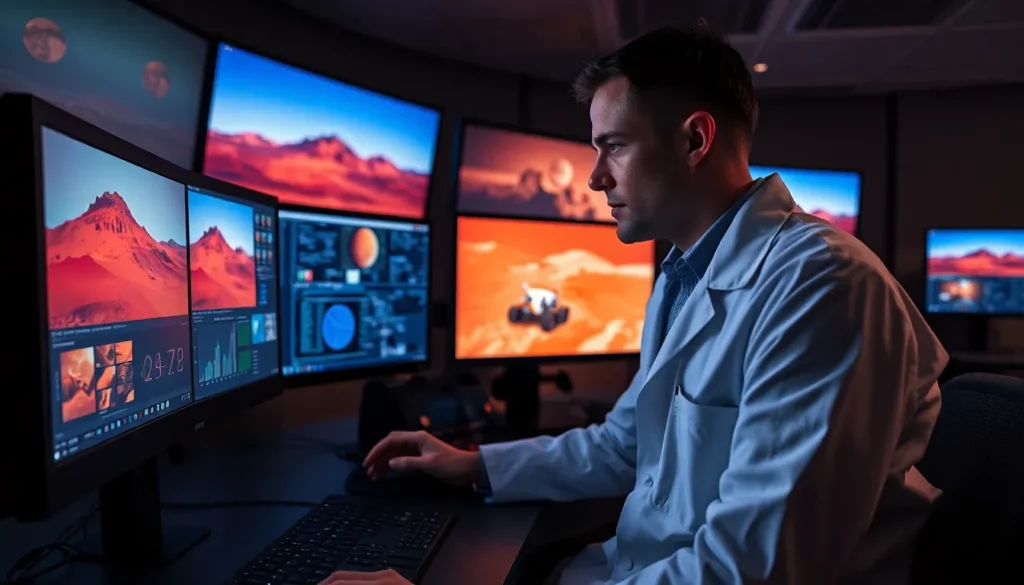Table of Contents
ToggleImagine floating in a weightless paradise, where your morning coffee does a little dance before you sip it. Life in space isn’t just about dodging asteroids and pretending to be an astronaut in a sci-fi movie; it’s a unique adventure that challenges everything we know about existence. From quirky daily routines to the mind-boggling science behind living in zero gravity, space life offers a blend of excitement and absurdity that’s hard to resist.
Understanding Life In Space
Life in space presents unique challenges and opportunities. The experience encompasses scientific exploration, technological innovation, and profound existential questions.
The Concept of Life Beyond Earth
The search for extraterrestrial life captivates scientists and enthusiasts alike. Various factors contribute to the concept, including the discovery of extremophiles on Earth, organisms thriving in extreme conditions. Planets and moons within our solar system, like Europa and Mars, are prime targets for exploration due to their potential for hosting life. Astronomers study exoplanets in habitable zones, attempting to find Earth-like conditions. These endeavors expand understanding of life’s potential beyond our planet.
Historical Perspectives on Life In Space
Historical efforts to explore life in space began with early science fiction literature. Pioneers in rocketry, like Konstantin Tsiolkovsky and Wernher von Braun, laid the groundwork for future missions. In 1961, Yuri Gagarin became the first human in space, marking a significant milestone. Subsequent missions led to the Apollo moon landings, stirring public interest in space exploration. In recent decades, the Hubble Space Telescope has enabled discoveries of potential habitable worlds, while advances in astrobiology continue to shape our understanding of life’s possibilities in the cosmos.
Conditions for Life In Space

Life in space depends on specific conditions that can support biological processes. Understanding these conditions highlights the delicate balance required for existence beyond Earth.
Essential Elements for Life
Oxygen, water, and carbon are fundamental for life as we know it. Cells require water for biochemical reactions, while carbon serves as the backbone for organic molecules. Life relies on the presence of nutrients for energy, contributing to survival. Amino acids and nucleotides, which form proteins and DNA, respectively, showcase essential building blocks. Without these components, sustaining life becomes impossible in the harsh environment of space.
Habitable Zones in the Universe
Habitable zones refer to regions around stars that possess temperatures suitable for liquid water. Within our solar system, Mars and certain moons like Europa and Enceladus are potential candidates. Proxima Centauri b, an exoplanet, orbits within its star’s habitable zone and has raised excitement among astronomers. The right distance from a star allows for liquid water, a critical requirement for life. Environments meeting these criteria suggest that life may exist beyond Earth, expanding possibilities for discovery.
Current Research and Discoveries
Current research into life in space reveals exciting insights into human experiences beyond Earth. Understanding how astronauts adapt shapes future missions and drives technological advancements.
Space Missions and Their Findings
NASA’s Perseverance rover, deployed on Mars, continues exploring the planet’s geological features and searching for signs of ancient microbial life. The mission emphasizes the significance of astrobiology, with findings indicating that Mars may have once supported life. ESA’s Jupiter Icy Moons Explorer (JUICE) aims to study Europa and Ganymede, moons believed to harbor subsurface oceans. These missions provide data critical for understanding potential habitats beyond Earth.
Astrobiology and its Significance
Astrobiology plays a pivotal role in unraveling the potential for life in space. This interdisciplinary field investigates extremophiles—organisms thriving in extreme environments on Earth, offering clues about life’s adaptability. Studies on hydrothermal vents, acidic lakes, and frozen tundras highlight the resilience of life. Research into exoplanets located in habitable zones has increased, enhancing knowledge about conditions that may support life. Discovering microbial life on Mars or moons like Europa would redefine our understanding of life’s limits.
The Future of Life In Space
Exploring life in space reveals a fascinating landscape filled with potential for the future. As humanity reaches farther into the cosmos, advancements in technology support this vision.
Possibilities for Colonization
Research indicates that Mars possesses resources necessary for human colonization, including water ice and carbon dioxide. Scientists propose establishing habitats that utilize in-situ resource utilization, making them less reliant on Earth. Advanced propulsion systems can reduce travel time, making Mars and other bodies more accessible. With continued advancements in life support systems, extended missions can support growing colonies. Collaboration among international space agencies will enhance knowledge and technology share. Investments in commercial space ventures drive innovation, shaping the infrastructure required for sustainable living in space.
Challenges to Sustaining Life
Surviving in space presents multiple challenges related to harsh environments. Radiation exposure poses significant risks, influencing both physical health and technology function. Limited access to essentials like water and food complicates long-term habitation efforts. Psychological effects from isolation and confinement impact astronaut wellbeing during extended missions. Maintaining a stable atmosphere remains crucial, as fluctuations in pressure can threaten life support systems. Achieving sustainable energy sources also proves essential for future colonies. Addressing these challenges requires ongoing research and innovative solutions.
Life in space presents an extraordinary blend of challenges and possibilities that captivates the imagination. As humanity pushes the boundaries of exploration the potential for discovering life beyond Earth grows ever more tantalizing. The advancements in technology and science pave the way for sustainable living in extreme environments while addressing the critical needs for survival.
The ongoing research into astrobiology and the exploration of celestial bodies like Mars and Europa could redefine humanity’s understanding of life itself. As we prepare for future missions the lessons learned from life in space will undoubtedly shape not just our journey beyond Earth but also our perspective on existence. Embracing the adventure of life in space inspires curiosity and innovation that may one day lead to profound discoveries.






